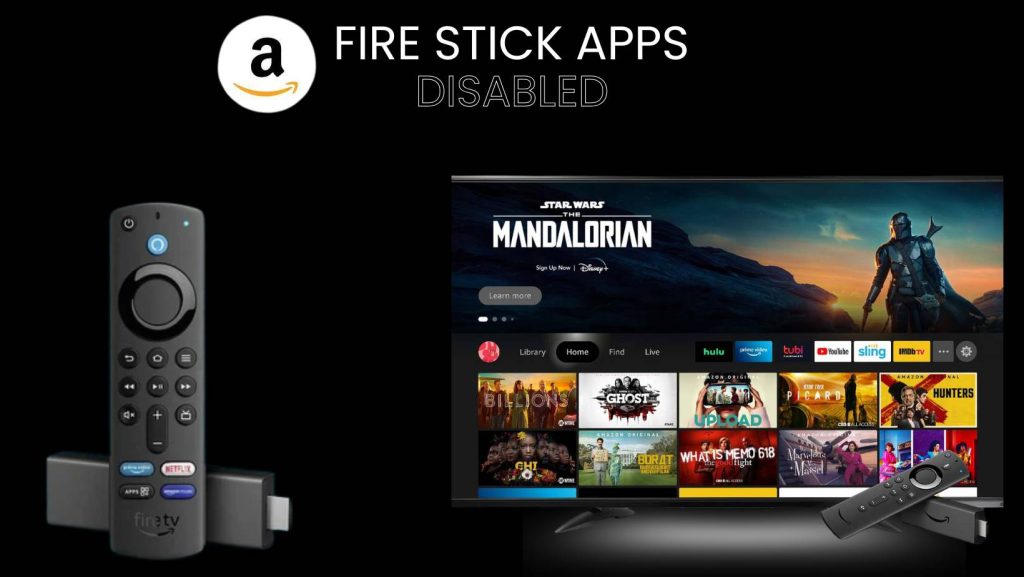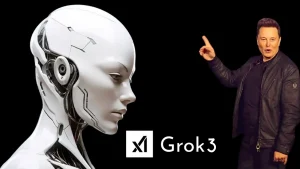Amazon has launched a sweeping crackdown on piracy by remotely disabling apps on its popular Fire TV Stick devices. Over the past few weeks, users have reported that certain third-party apps have either vanished from their home screens, stopped functioning, or displayed sudden error messages after attempting to stream content. This action directly targets apps that deliver pirated movies, live TV, and sports channels.
The move comes as Amazon faces growing pressure from the entertainment industry to curb the misuse of its streaming devices. For years, the Fire TV Stick has been one of the most pirated streaming tools in the world, largely because of its ability to sideload apps outside of the official Amazon Appstore.
With Amazon Fire Stick apps disabled remotely, Amazon is sending a clear signal that piracy will no longer be tolerated, while also reshaping the future of digital streaming control.
How Amazon is Remotely Disabling Fire TV Stick Apps
Amazon’s Fire OS software includes a hidden layer of remote management tools. These were originally designed to push updates, fix bugs, and manage apps remotely. Now, the same system is being used to identify and disable piracy-related apps.
- Silent Blocking: Some apps remain installed but cannot be opened. When users click them, they either crash or display an error stating that the app is unavailable.
- Automatic Removal: In other cases, Amazon quietly removes the apps from the device interface altogether. This makes it appear as though the app was never installed.
- Pre-Installation Blocking: For certain APK files, installation is blocked altogether. When users try to sideload these apps, the system detects them as “unsafe” and stops the installation before it finishes.
The important detail here is that these restrictions are not just about apps that have already been downloaded. Moving forward, Amazon Fire Stick apps disabled could also mean apps are blocked before they even get installed, making it much harder for piracy developers to stay ahead.
Which Fire TV Stick Apps Are Being Disabled
Amazon has not published an official list of affected apps, but user reports from forums, social media, and tech communities indicate that the crackdown is targeting a very specific set of applications:
- Free movie and TV show streaming apps that pull unlicensed content from piracy servers.
- Illegal IPTV apps that provide access to premium sports events, live television, and pay-per-view channels without authorization.
- Modified apps and clones of popular streaming services that trick users into bypassing subscription fees.
- Piracy add-ons for Kodi and similar platforms, which were once a major driver of Fire Stick piracy.
This crackdown also affects the booming trade of “jailbroken Firesticks,” devices preloaded with illegal streaming apps that are sold on third-party marketplaces. These devices, often marketed as “free TV forever,” are now losing their value, as many of their apps are instantly rendered useless once connected to the internet.
Global Impact on Users
The disabling of apps is not limited to one region—it is being rolled out across the globe. However, the level of enforcement varies depending on location.
- United States and Europe: Users here have reported the most aggressive blocking, with many popular piracy apps disappearing overnight. This reflects stricter copyright enforcement laws in these regions.
- Asia and Latin America: While slower to enforce, reports are beginning to surface of apps being disabled in these markets as well. This suggests Amazon is rolling out the crackdown in stages.
- Legitimate users: Those who stick to official apps like Netflix, Disney+, Hulu, and Prime Video will see no difference in their experience.
For piracy-reliant users, however, the experience is completely disrupted. Forums and online communities are flooded with threads on Amazon Fire Stick apps disabled, showing just how widespread and impactful the enforcement has become.
How Amazon Detects Piracy Apps
Most users want to know: how does Amazon know which apps are pirated? The process is more advanced than many realize.
- App Signature Analysis: Every app has a digital signature. Pirated apps often share repeated patterns or cloned code structures, making them easy to identify.
- Traffic Monitoring: Piracy apps usually generate heavy video streaming traffic to suspicious domains. Amazon’s system can flag and block apps based on unusual or unlicensed data streams.
- Blacklist Partnerships: Amazon reportedly works with Hollywood studios and anti-piracy watchdogs to maintain updated lists of known piracy apps, domains, and servers.
- Diagnostic Reports: Fire TV devices regularly send usage logs back to Amazon for performance monitoring. These logs can reveal when unauthorized apps are installed or heavily used.
This multi-layered approach means even sideloaded APKs that never appear in the Appstore can be identified and disabled.
Legal Reasons Behind the Crackdown
Amazon’s decision is heavily influenced by legal and business pressures. Entertainment studios, broadcasters, and sports leagues have been fighting piracy for decades, and streaming piracy has become a billion-dollar problem.
By cracking down, Amazon achieves several goals:
- Protecting Licensing Agreements: Major studios require Amazon to ensure their content isn’t being pirated through its devices.
- Avoiding Lawsuits: By disabling piracy apps, Amazon shields itself from legal liabilities that could arise from enabling illegal streaming.
- Reinforcing Platform Integrity: Maintaining a piracy-friendly reputation could damage Amazon’s streaming services, such as Prime Video, and hurt trust with partners.
In short, with Amazon Fire Stick apps disabled, the company demonstrates to regulators and copyright owners that it is serious about protecting intellectual property.
Data Privacy Concerns
A unique but less discussed issue is what data Amazon is collecting in the process. Each time an app is disabled, diagnostic information is likely sent back to Amazon’s servers. This may include:
- The name of the disabled app.
- The number of attempts to launch it.
- The account and device ID associated with the usage.
- Potentially, the user’s IP address and region.
While Amazon insists that this enforcement is aimed at piracy, privacy advocates argue that it opens the door to more surveillance. Users are now asking whether their streaming behavior on Fire TV Sticks is being monitored beyond piracy detection.
Could Amazon Ban User Accounts Next?
Currently, only apps are being targeted, but the natural question is: what comes next? Some experts believe Amazon may move toward account-level enforcement in the future. This could mean:
- Warning notices sent to users who repeatedly attempt to install or use piracy apps.
- Temporary suspension of Amazon accounts linked to high piracy activity.
- Permanent bans for users who continue to bypass restrictions, similar to how Google sometimes bans accounts for policy violations.
While no such measures have been confirmed, the possibility has sparked concern among users who sideload apps frequently.
Community Reactions and Workarounds
The Fire TV Stick community is reacting strongly to the crackdown.
- Positive Reactions: Many legitimate users welcome the move, seeing it as a way to keep devices safe from malware and buggy apps.
- Negative Reactions: Piracy-reliant users are upset, with many expressing frustration in online groups.
Workarounds being shared include:
- Using VPNs to try and mask activity, though these don’t always prevent app disabling.
- Installing modified APKs with altered signatures to avoid detection.
- Switching to Android TV boxes, which don’t have Amazon’s centralized blocking capabilities.
However, these solutions are temporary at best and often come with risks, such as malware infections, device instability, or legal consequences.
Bigger Picture: Piracy vs. Paid Streaming
Piracy remains widespread because of the fragmentation of streaming platforms and rising subscription costs. With multiple services splitting content between them, many consumers feel forced into piracy as a cheaper option.
Amazon’s crackdown highlights the broader industry trend of fighting piracy with stricter enforcement rather than more affordable content bundles. The question remains whether disabling piracy apps will truly reduce illegal streaming or simply push users to other devices and methods.
Future of Fire TV Stick
This crackdown signals that the Fire TV Stick may be heading toward a more closed ecosystem:
- Sideloading, a feature that made Fire Stick popular, could eventually be blocked altogether.
- Amazon may apply the same anti-piracy technology across its other devices, including Fire Tablets, Echo Show screens, and Fire OS-powered Smart TVs.
- In the long run, Fire TV Stick may resemble Apple TV, where only apps approved by the official store can be installed.
If this happens, users will have far less freedom to customize their devices, and the control will rest entirely with Amazon.
For the entertainment industry, this is a victory against piracy. For users, it is a reminder that the future of streaming is moving toward tighter control, stricter enforcement, and potentially fewer freedoms in customizing devices.
FAQs
1. Why are Amazon Fire Stick apps disabled?
Amazon is disabling apps linked to piracy to comply with copyright laws and protect its licensing deals.
2. Which apps are being targeted?
Mainly IPTV services, free movie/TV streaming apps, and cracked subscription apps.
3. Does this affect legal apps?
No, official apps like Netflix, Prime Video, and Disney+ remain unaffected.
4. Can sideloaded apps still work?
Some legal sideloaded apps still work, but piracy APKs are quickly disabled.
5. Can Amazon ban my account?
Not yet, but repeated piracy app usage could lead to warnings or account restrictions in the future.
6. Do VPNs stop apps from being disabled?
No, VPNs hide streaming activity but cannot stop Amazon from blocking apps at the device level.
7. What happens when an app is disabled?
It either won’t open, disappears from your home screen, or fails to install.
8. What data does Amazon collect during blocking?
Amazon tracks app names, usage patterns, and device/account details for enforcement.
9. Can I fix a wrongly disabled app?
Reinstall via the official Appstore or contact Amazon support if you believe it was flagged by mistake.
10. What’s next for Fire Stick users?
Amazon may move toward a more closed system, limiting sideloading and increasing app restrictions.




